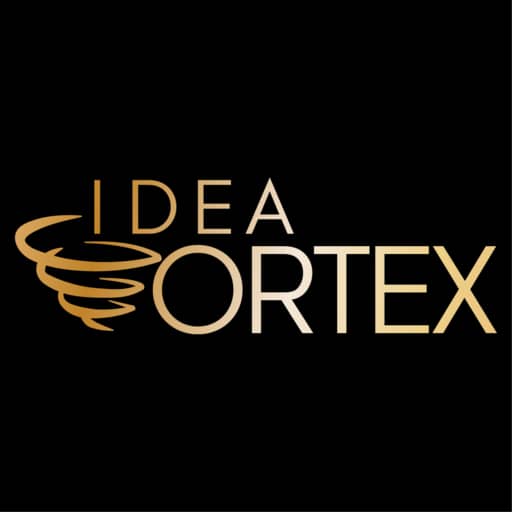Quick Introduction to Quantifier Logic (QL)
Quantifier Logic, or QL, is a subset of symbolic logic that deals with quantifiers such as ‘all,’ ‘some,’ or ‘none.’ It allows us to more precisely express statements about quantities and their associated qualities.
Understanding QL begins with two key quantifiers:
- Universal Quantifier (∀): This symbolizes ‘for all’ or ‘every.’ For example, “∀x(Px)” means “for every x, Px is true.”
- Existential Quantifier (∃): This represents ‘there exists’ or ‘some.’ For instance, “∃x(Px)” translates to “there exists some x for which Px is true.”
For a deeper dive into these concepts, the Stanford Encyclopedia of Philosophy offers an excellent resource on Quantifiers and Quantification.
To visualize how these quantifiers work in practical scenarios, consider this table:
| Item | Universal Quantifier (All) | Existential Quantifier (Some) |
|---|---|---|
| Apples | All apples are red (not true if one green apple exists) | Some apples are green (true if at least one green apple exists). Note that ‘Some’ is true even if there is only one |
| Cars | All cars need fuel (true for traditional cars) | Some cars are electric (true, as electric cars exist) |
QL in Everyday Scenarios
Now, let’s apply QL to everyday life decisions. A common scenario we all face is choosing what to eat for breakfast.
Imagine you’re deciding between cereal and eggs. Using QL, you might frame your thoughts like this:
- Cereal: “If I eat cereal, I will have a quick breakfast (∃x(Cx → Qx)).”
- Eggs: “If I make eggs, they will be healthier than cereal (∀x(Ex → Hx)).”
Here, Cx could represent eating cereal, Qx could mean having a quick meal, Ex could stand for making eggs, and Hx could signify a healthier option.
Let’s involve Algo Droidwick, our humorous character, for a fun twist. Algo is trying to decide what to wear based on the weather. On a sunny day, his logic might be, “If it’s sunny, I’ll wear sunglasses (∀x(Sx → Gx)).” But Algo, with his quirky logic, might also think, “If I wear sunglasses, it will become sunny (∃x(Gx → Sx)),” humorously misunderstanding cause and effect.
The use of QL in such scenarios makes decision-making clearer and adds a touch of humor when personified through characters like Algo Droidwick.
Refer to this Decision-Making Sheet above for examples and a structured approach to applying QL in everyday decisions. It’s a practical tool that helps you frame your daily choices within the structure of Quantifier Logic.
Why is the formal symbolism of Quantifier Logic (QL) important in understanding and applying logical concepts accurately and effectively?
The formal symbolism in Quantifier Logic (QL) is crucial because it provides a clear, unambiguous way to represent complex logical statements. Unlike natural language, which can be vague or open to interpretation, QL’s formal symbols express relationships and conditions precisely. This precision is vital in analyzing arguments, constructing logical models, and solving problems without the risk of misunderstanding or misinterpretation. Essentially, QL’s symbolism is a universal language for logic, enabling consistent and accurate communication of ideas across various fields and disciplines.
Scenarios
In my experience, humor is a powerful tool for learning, especially when dealing with complex subjects like Quantifier Logic. So, please meet Mr. Algo Droidwick: Your Quirky Guide and our whimsical character obsessed with learning how humanity works. He sometimes misses the point, but I assure you, he excels in this topic –or is he? Read on and find out!
With Algo Droidwick, we can explore QL concepts in a lighter, more engaging way. Let’s look at a few scenarios where he applies Quantifier Logic:
Scenario 1: The Case of the Missing Socks
- Logical Statement: “For every pair of socks I own, one always goes missing (∀x(Sx → Mx)).”
- Algo’s Interpretation: Algo believes that if he buys only single socks instead of pairs, he’ll never lose them again. “If I buy single socks, none will go missing (∃x(Sx → ¬Mx)).” Algo’s humorous misunderstanding of QL leads him to a quirky and impractical solution.
Scenario 2: Algo and the Overcrowded Train
- Logical Statement: “If a train is overcrowded, I won’t find a seat (∀x(Tx → ¬Sx)).”
- Algo’s Interpretation: Algo decides always to have a seat if he brings his chair. “If I bring my chair, I will have a seat (∃x(Cx → Sx)).” This absurd solution adds a humorous twist to the practical use of QL in everyday situations.
Scenario 3: Algo’s Coffee Conundrum
- Logical Statement: “All my mornings start with coffee (∀x(Mx → Cx)).”
- Algo’s Interpretation: Algo ponders, “If I drink coffee all day, it will always be morning (∃x(Cx → Mx)).” This comically illogical conclusion shows the fun side of logical fallacies.
A template is available at Algo Droidwick’s QL Humor Sheet for readers interested in creating humorous QL scenarios. This interactive sheet allows you to plug in different variables and create funny interpretations of QL statements.
Critical Thinking and QL
Critical thinking is essential in our information-rich world, where we constantly make decisions and solve problems. Quantifier Logic (QL) is not just about symbols and abstract concepts; it’s a robust tool for enhancing our critical thinking abilities. By understanding and applying QL, we can better analyze arguments, identify logical fallacies, and make more informed decisions.
QL in Identifying Logical Fallacies
- The fallacy of Hasty Generalization: This is when a conclusion is reached based on insufficient evidence. For example, “I met two aggressive dogs, so all dogs must be aggressive (∀x(Dx → Ax)).” QL helps us recognize the insufficient data to claim ‘all’ in this statement.
- The fallacy of False Cause involves assuming a cause-and-effect relationship that doesn’t exist. “Whenever I carry an umbrella, it doesn’t rain (∀x(Ux → ¬Rx)).” Here, QL assists in questioning the validity of the cause (carrying an umbrella) affecting the outcome (rain).
QL in Everyday Decision-Making
- Consider a scenario where you’re evaluating news sources. With QL, you might say, “All credible news sources fact-check their information (∀x(Nx → Fx)).” This QL approach encourages critical evaluation of each news source based on the criterion of fact-checking.
Practical Exercises for Enhancing Critical Thinking
- Scenario Analysis: Use real-world scenarios and apply QL to evaluate different statements. For example, “All politicians lie (∀x(Px → Lx)).” Is this a logical statement?
- Debate and Discussion: Engage in discussions where you form arguments using QL. This will help structure arguments logically and identify inconsistencies in others’ arguments.
For those interested in practical exercises and scenarios, the QL Critical Thinking Workbook offers a collection of exercises designed to improve your logical reasoning skills using QL.
Conclusion
In this exploration of Quantifier Logic (QL), we’ve seen how it extends far beyond theoretical mathematics and logic. QL is a powerful tool that, when understood and applied correctly, can significantly enhance our decision-making processes and critical thinking abilities and even inject a bit of humor into our daily lives.
Recap of Key Takeaways:
- Basics of QL: We started with an introduction to the fundamental concepts of QL, understanding the universal and existential quantifiers.
- QL in Everyday Life: Practical examples showed how QL can simplify complex decisions, from choosing breakfast to deciding what to wear based on the weather.
- Humor with Algo Droidwick: Algo Droidwick’s whimsical interpretations of QL brought a light-hearted perspective to understanding logical structures and fallacies.
- Critical Thinking Enhancement: QL is a valuable tool for developing critical thinking, helping us identify logical fallacies and make well-reasoned decisions.
Encouragement for Ongoing Learning and Application:
- QL, like any other skill, improves with practice. I encourage readers to integrate these concepts into their daily thinking patterns. Whether making small decisions, evaluating news sources, or engaging in debates, applying QL can provide clarity and logical structure to your thought processes.
- Numerous resources are available online for those interested in continuing their journey with QL. Websites like Khan Academy and Coursera offer courses that delve deeper into logic and critical thinking.
Final Thoughts:
- Understanding and using Quantifier Logic is not just for mathematicians or philosophers; it’s a skill that can benefit everyone. By embracing QL’s logical framework, we can enhance our ability to think critically, make informed decisions, and approach problems rationally.
- Remember, logic is not just about being right; it’s about reasoning correctly. And with a character like Algo Droidwick, we’re reminded that learning can be fun and that sometimes, a humorous perspective can make even complex topics like QL more approachable and enjoyable.

